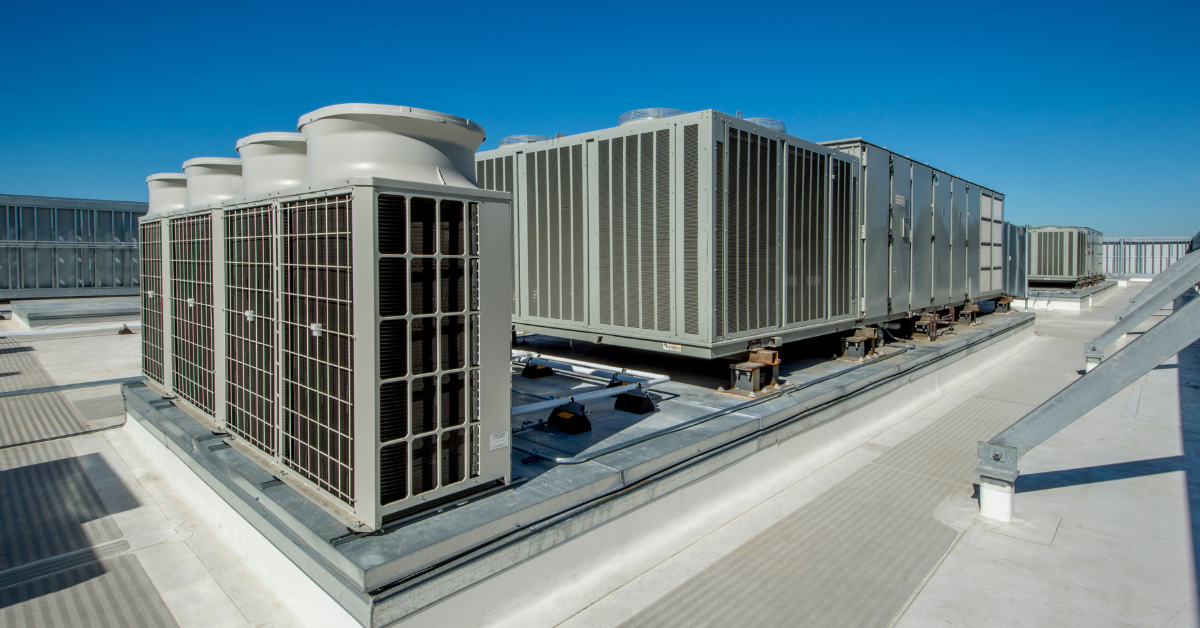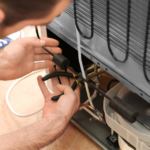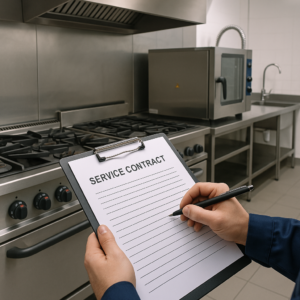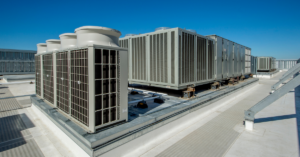
Every facility manager knows the drill. HVAC complaints roll in the second the building swings too hot or too cold. One disgruntled call turns into ten. Energy bills balloon. And somewhere behind a locked rooftop access door, your system is grinding away—maybe working harder than it should, maybe giving up piece by piece.
The secret to avoiding all that? Ditch the reactive scramble. Top-tier HVAC performance doesn’t happen by luck; it’s the result of consistent habits, sharp oversight, and knowing when to bring in the pros. Here’s how the best facility managers keep their systems efficient, reliable, and out of the danger zone.
1. Start with the Filters—Yes, Again
Air filters might be the most boring part of your HVAC system, but ignoring them is like putting your car on the freeway with the parking brake on. Dirty filters force fans to work harder, restrict airflow, and drop overall efficiency by up to 15%. And worse? They invite dust to build up on coils, making your cooling process less effective.
Set a regular filter change schedule based on your building’s load. For heavy-use commercial spaces? You’re likely looking at monthly. For light office environments? Every 2-3 months might do. But don’t guess—check. A dirty filter is a system killer in disguise.
2. Don’t Skip Coil Cleaning
Evaporator and condenser coils are heat exchange central. When they’re coated in grime, pollen, or greasy air particulates (hey there, restaurants), their performance drops. The system struggles to dump heat, which forces compressors to run longer. That means higher bills, more wear, and eventually, premature failure.
Coils should be cleaned professionally at least twice a year—once before cooling season, once before heating kicks in. And if your building’s near a construction site or urban roadway? You’ll want to up that frequency.
3. Check Refrigerant Levels Like You Check Fuel in a Truck
Low refrigerant means your system can’t move heat properly. That leads to freezing coils, overheating compressors, and awful efficiency numbers. It also burns cash, because the system will run longer to do the same job—like a treadmill set to uphill.
Have a technician check refrigerant pressure during seasonal maintenance. And don’t settle for just a top-off. If it’s low, find the leak. Constant refilling is a red flag, not a solution.
4. Look at the Ductwork—Seriously
Leaky ducts can waste up to 30% of your conditioned air. Think about that. You’re paying to cool air that never even makes it to the room. It’s vanishing into drop ceilings, crawlspaces, and utility shafts.
A pressure test and visual inspection can reveal gaps, splits, or disconnected sections. Sealing those ducts is one of the fastest ways to improve efficiency, especially in older buildings with Frankenstein HVAC setups patched together over decades.
5. Schedule Smart Maintenance, Not Just Emergency Calls
Facility managers who treat HVAC like a fire extinguisher—only touched during emergencies—always end up paying more. Smart managers lock in regular preventive maintenance contracts. That means quarterly or biannual check-ups where techs catch problems early: bad capacitors, loose wiring, seized motors.
Day & Nite All Service builds custom maintenance plans that match your equipment age, usage, and risk level. And because we’ve worked across every kind of commercial setup—from retail and hospitals to foodservice and manufacturing—we know how to make plans that actually prevent headaches.
6. Use Your BAS (Or Install One!)
If your building has a Building Automation System and you’re not checking it daily, you’re leaving insights on the table. BAS systems track temperature trends, system runtime, and alerts. A sudden spike in run hours? A room that’s always 5 degrees off? These are breadcrumbs leading to HVAC inefficiencies waiting to be solved.
Don’t have a BAS yet? It’s time. The ROI is real. Even a simple remote monitoring setup can catch problems days before they become complaints.
7. Monitor Tenant/Occupant Feedback (But Filter the Noise)
Tenants are your frontline sensors. If someone complains about hot spots, weird smells, or unusual noises—it’s probably not their imagination. HVAC systems whisper before they scream. A musty odor could mean mold in the drain pan. A buzzing vent might be a failing blower motor.
Track complaints. Look for patterns. And use them to guide your maintenance team or your HVAC partner. You don’t need to chase every squeaky vent, but three reports about one zone? That’s a clue worth following.
8. Plan for Replacement—Not Panic
All HVAC systems have a lifespan. Twenty years if you’re lucky. Ten if you’re running hard without care. The worst scenario? A major failure during a heatwave or in the middle of winter, and every supplier is backed up three weeks.
Smart managers know their system’s age, parts availability, and efficiency rating. They work with service partners like Day & Nite to create phased replacement plans, prioritize capital upgrades, and secure rebates when available. This way, replacement is a strategic move—not a crisis.
Why Facility Managers Trust Day & Nite
Because we don’t just show up when things break. We help facilities prevent failures, reduce energy use, and extend the life of their HVAC investments. Our technicians don’t think in terms of “what’s broken?”—they ask, “what’s next to fail?” and stop it before it happens.
We’re fast when it matters, thorough when it counts, and proactive always.
Need to tighten your HVAC game? Let’s talk. Day & Nite All Service can assess your current system, audit energy use, and build a plan that works for your building’s unique demands.




